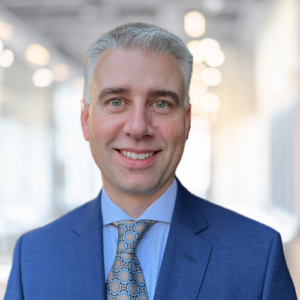They would like to retire in 11 years when they are both 59 with an income of $60,000 per year after tax; it won’t be a problem.
A couple we’ll call Maury, a building trades contractor, and Josey, a consultant, both 48, live in Ontario with a daughter we’ll call Laura, age 12. They bring home $10,540 per month and add $30 per month from the non-taxable Canada Child Benefit. That’s a total of $126,840 per year after tax. They are diligent in their financial affairs and have a total of $224,057 in RRSP and TFSA accounts, $100,000 in cash and $46,360 in the family Registered Education Savings Plan.
They would like to retire in 11 years when they are both 59 with an income of $60,000 per year after tax. As we’ll see, they can attain that retirement income at 59 and add more at 65.
They want to be able to put enough money into the RESP for their daughter’s post-secondary education even if she attends an institution far from home. They would also like to be someplace warm for four months in winter — we’ll allow $5,000 monthly for that winter break, and to be able to provide $500 per month for Maury’s mother. The question is — can they do all that by age 59?
Family Finance asked Eliott Einarson, a financial planner who heads the Winnipeg office of Ottawa-based Exponent Investment Management Inc., to work with the couple.
Because Maury and Josey have recently finished paying off their mortgage — leaving them with an extra $4,992 per month or $60,000 per year to save or spend — the challenge now is about how to best use those savings to reach their financial goals.
Family comes first
Taking care of Laura’s education and Maury’s mother are their first priorities.
Paying for out-of-province post-secondary education for Laura would require $100,000. The RESP has $46,360, leaving a funding gap of $53,640. Assuming they receive a conservative two per cent after inflation on the investments, they will have to contribute about $9,000 per year over the next five years to get there. They will max out the annual Canada Education Savings Grant, which matches the lesser of 20 per cent of annual contributions or $500, dropping their required annual contribution to $8,500. They currently add $2,040 per year out of pocket, so will have to use an additional $6,460 per year from the savings freed up by paying off the mortgage to get there, Einarson explains.
They can reserve another $500 per month or $6,000 per year for Maury’s mom. The RESP supplement and money for mom leaves about $47,500 in annual savings.
Retirement accounts
Currently, Maury’s RRSP, a spousal RRSP and a locked-in retirement account have $169,317 and they add $475 per month. If he adds an additional $1,000 per month for 11 years to raise annual contributions to $17,700, with growth at three per cent after inflation, his RRSP will have a balance at his age 59 of $467,873. It will pay $22,700 per year for 31 years from age 59 to 90.
Josey has no RRSP savings of her own. She has a spousal plan from Maury. We’ll consider her plan part of Maury’s for calculations. Josey, with a defined-benefit plan provided by her employer, has very little contribution room of her own because of a rule, the Pension Adjustment, which reduces customary RRSP space by the amount going into company DB plans. His employment pension will provide about $50,000 of taxable income starting at age 59 plus an annual bridge of $13,440 to age 65.
Combined with Josey’s pension, the couple would have RRSP and DB pension income of $86,140 starting at age 59.
Next move — take $25,000 out of present cash savings of $100,000 and put it into a non-registered investment account. They should add $1,500 per month for the next 11 years to their age 59. Assuming that they attain a three per cent return after inflation and taxes, the account would have $272,100 by the time they are 59. With the same three per cent return, the account could pay $13,200 per year to age 90. It would be fully taxable, Einarson notes.
Maury and Josey have $54,740 in their TFSAs. They add $1,000 per month. If they continue this for the 11 years to retirement and attain a three per cent return after inflation, the accounts would have a balance of $234,100 and then be able to provide $11,360 for the next 31 years to their age 90.
Adding up
At age 59, the couple would thus have $63,440 from Josey’s defined benefit employment pension, $22,700 from their RRSPs, $13,200 from non-registered savings, and $11,360 from their TFSAs for a total of $110,700. After average tax of 16 per cent on everything but TFSA income, the couple would be left with $7,900 per month. That sum far exceeds the $3,812 per month they currently spend once child-care costs and their various savings vehicles are eliminated.
When they are 65, they can add their Old Age Security benefit, $7,384 each, and CPP benefits of an estimated $12,470 for Josey and $8,092 for Maury. They will lose the $13,440 pension bridge leaving their income permanently at $132,590. After splits of eligible income and deduction of TFSA cash flow, they would pay tax at an average rate of 18 per cent and, with TFSA cash flow restored, have $9,230 to spend each month.
The couple could temporarily lower income and tax by delaying starts of OAS and CPP to age 70 with boosts of income of 36 per cent and 42 per cent, respectively, of age 65 benefits. The higher payouts, however, would be subject to tax and would not take mortality into account.
“They have made a good start on retirement plans and with provisions for Maury’s mom and Laura’s RESP, they are in good shape,” Einarson concludes.
Retirement stars: 5 ***** out of 5






